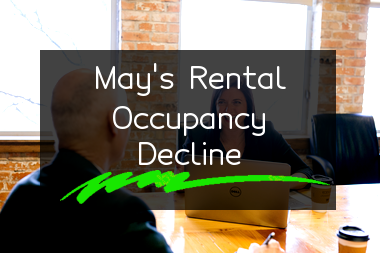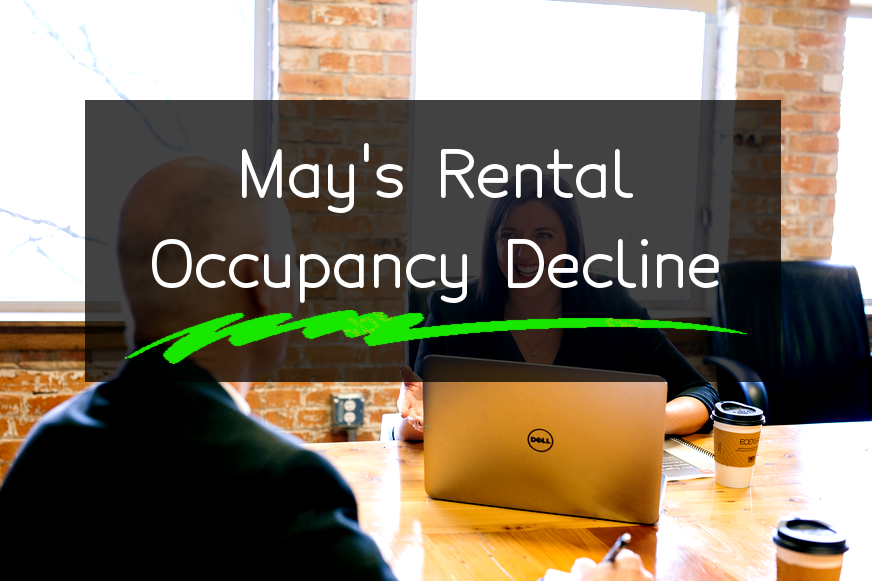A decline in STR occupancy during a typically busy travel month can indicate a potential problem in the market, such as an oversupply of rental properties or a decrease in demand due to economic issues. Low occupancy rates can lead to decreased revenue and profit for investors who own these properties, causing concern for their investment returns.
Furthermore, a decrease in STR occupancy may also signal increased competition from alternative accommodation options, such as hotels, which may have implemented lower prices or better amenities to attract guests. This could potentially make it even more difficult for STR properties to attract renters in the future.
Overall, while one month's decline in occupancy does not necessarily predict long-term trends, it can serve as a warning sign for investors to review market conditions and make necessary adjustments to maintain profitability in the STR market.
Occupancy Falls By 8.6% As 84,000 Listings Are Added
If we assume that the total number of available listings before the addition of 84,000 listings was 1,000, then the occupancy rate would have been 1000/1000 = 100%.
After the addition of 84,000 listings, the total number of available listings would be 1,000 + 84,000 = 85,000.
Occupancy rate = (Total number of occupied listings / Total number of available listings) x 100%
If the occupancy falls by 8.6%, the new occupancy rate would be:
New occupancy rate = (100% - 8.6%) = 91.4%
91.4% = (Total number of occupied listings / 85,000) x 100%
Total number of occupied listings = (91.4% / 100%) x 85,000 = 77,690
So, the occupancy falls by 8.6% as 84,000 listings are added, which means that the total number of occupied listings decreased from 85,000 - 77,690 = 7,310 listings.
Understanding the american consumer
There are several reasons why understanding the American consumer is important:
- 1Market demand: Understanding the needs, wants, and preferences of American consumers will help businesses determine the potential market demand for their products or services. This will enable them to make informed decisions about how best to target their marketing efforts and how much inventory to produce.
- 2Competitive advantage: Staying ahead of competitors is key to success in any industry. Understanding the American consumer can help businesses identify trends and stay ahead of the curve, giving them a competitive advantage.
- 3Customer satisfaction: By understanding the needs and preferences of American consumers, businesses can develop products and services that better meet their needs and provide better customer satisfaction.
- 4Brand loyalty: Understanding the American consumer can help businesses build brand loyalty. By providing products and services that meet their needs and preferences, businesses can establish a loyal customer base, which can be valuable in the long run.
- 5Profitability: Ultimately, understanding the American consumer can lead to increased profitability. By developing products and services that are in demand and investing in effective marketing strategies, businesses can increase their sales and profits.
A Warning for Short-Term Rental Investors
Here are some statistically supported warnings for short-term rental investors:
- 1Legal issues: Many cities have different regulations surrounding short-term rentals. Some cities completely ban short-term rentals, while others require specific permits, taxes, or insurance. Failing to adhere to local regulations could result in hefty fines or other legal complications.
- 2Competition: As short-term rentals continue to increase in popularity, the competition among investors is also increasing. Investing in an over-saturated market could lead to lower occupancy rates and lower profitability.
- 3Seasonal fluctuations: Short-term rentals are often popular during peak travel seasons but may experience a significant drop in occupancy during off-season periods. Investors should consider the potential impact of seasonal fluctuations on their financial gain.
- 4Maintenance and upkeep: Unlike long-term rentals, short-term rentals require frequent cleaning, maintenance, and upkeep to ensure that the property is in optimal condition for guests. The cost of these tasks should be factored into the overall investment plan.
- 5Reputation management: Bad reviews from guests can significantly impact the performance of a short-term rental. Successful short-term rental investors must respond quickly to negative reviews and address any issues that arise promptly.
Overall, investing in short-term rentals can be a profitable venture, but it is essential to understand the potential risks and challenges before investing. Conducting thorough research and understanding the local regulations can help mitigate potential risks and increase the likelihood of a successful investment.
Just one more thing: if you liked the article, please like us on social media and share this article with friends.



